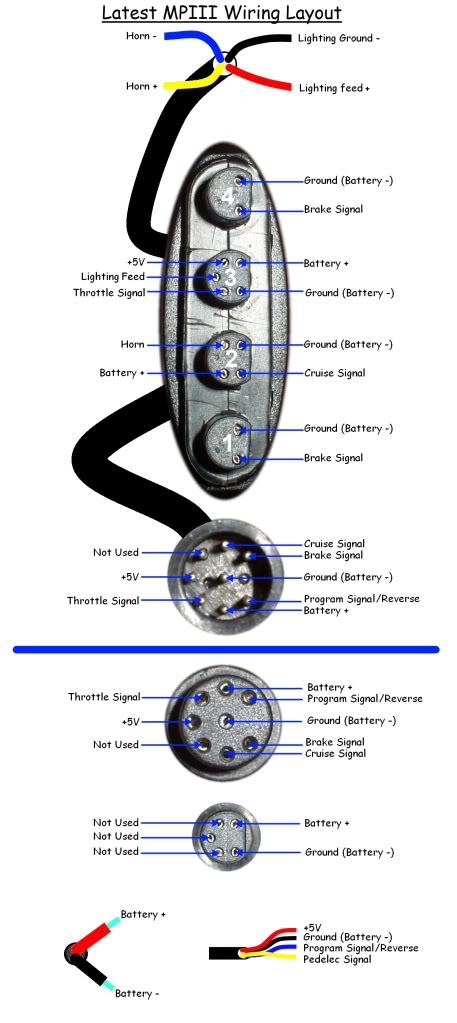Hi Jason,
If you only have the 8 Pin connector you must have the original version of the Smart Pie harness which should be the same as the MPIII Layout shown here:

The most obvious way for a short circuit to occur would be if the lighting wires
(shown at the top of the diagram) are touching and the red switch on the throttle was turned on.
I suggest you carefully inspect the light and horn wires to see if there are any signs of them touching each other.
Also check the wires for the pedelec and reverse on the motor harness for the same problem.
If you have a multimeter with a continuity setting that beeps to show continuity
(or you can simply use the Ohm setting instead) you can use it to check for a short circuit on the front harness.
If you are using the Ohm setting you should set it to a low scale
(e.g. 0-200 Ohms) which should then show ~0 on the display when the probes are touched together indicating continuity, and most meters will display a "1" on the left of the display when the circuit is open to indicate there is no continuity.
Make note of the reading obtained when you touch the probes directly together so you know what a direct short should look like. This reading can be as high as 2.5~3.0 Ohm instead of zero on cheap meters using thin test leads and even higher if the battery in the meter is low.
Anyway, you will need to carefully check between all of the pin combinations on the 8 pins in the harness connector.
Start by placing the black probe on the first pin and then touch the red probe against each of the other 7 pins in turn to see if there is a reaction on the meter, being careful not to cause false readings by accidentally touching the two probes together.
Then move your black probe to the second pin and repeat the above test. Repeat this process until all combinations of pins has been tested and make a careful note of which pairs of the connector have continuity
(and also record the resistance reading if using an Ohmmeter).
If you are using an Ohmmeter, you may see strange readings between different combinations of the battery+, battery-, throttle signal and +5V, but these should disappear with the throttle unit disconnected.
I suggest you carry out this test with all the controls connected and the red switch pressed in on the throttle.
If you find a short, it would be worth carrying out the test again with the controls disconnected to see if the short disappears, which would indicate whether the short is in the harness or one of the control units
(brakes, throttle or the cruise/horn).
Please let us know the results of your testing.
Alan